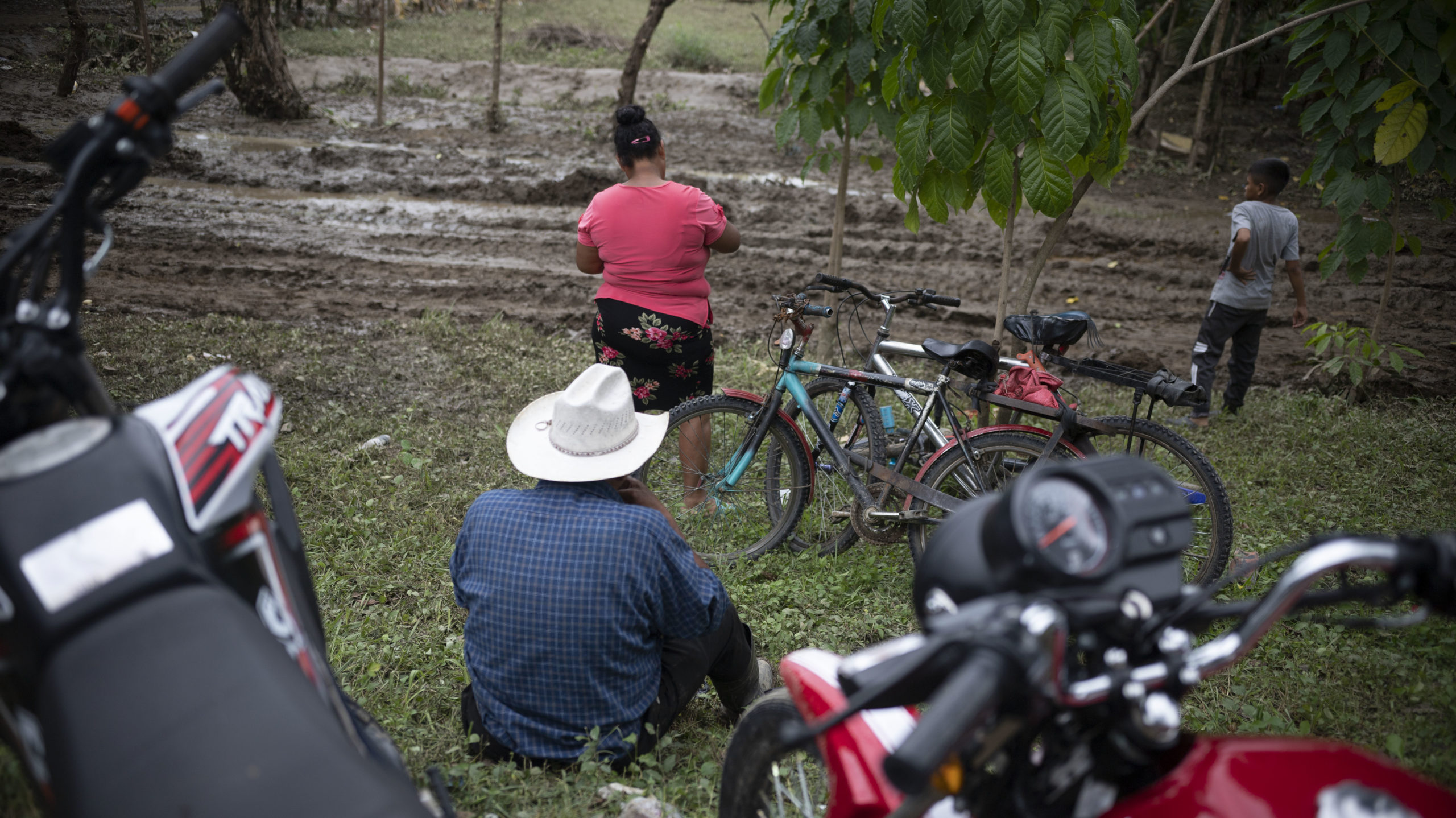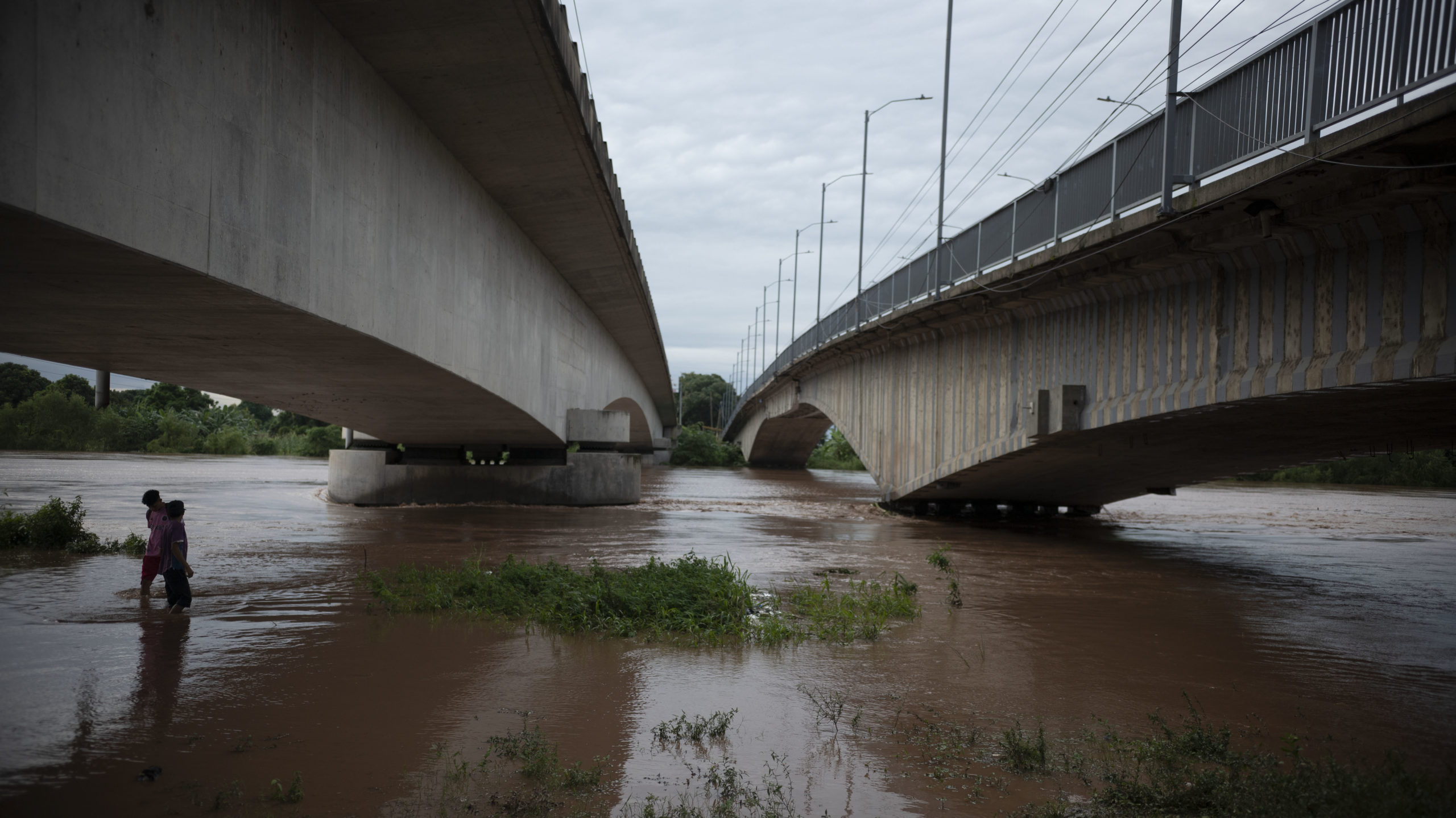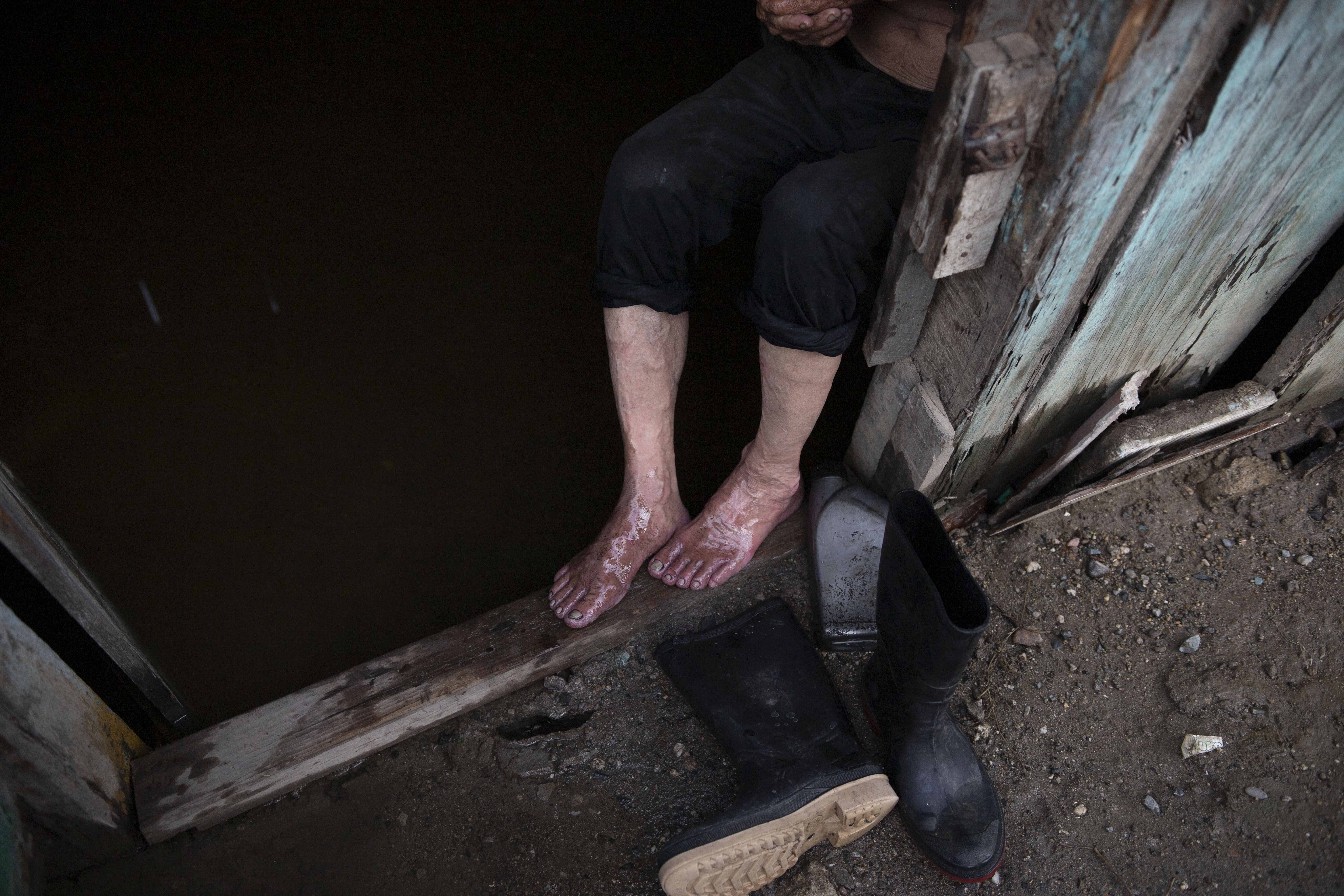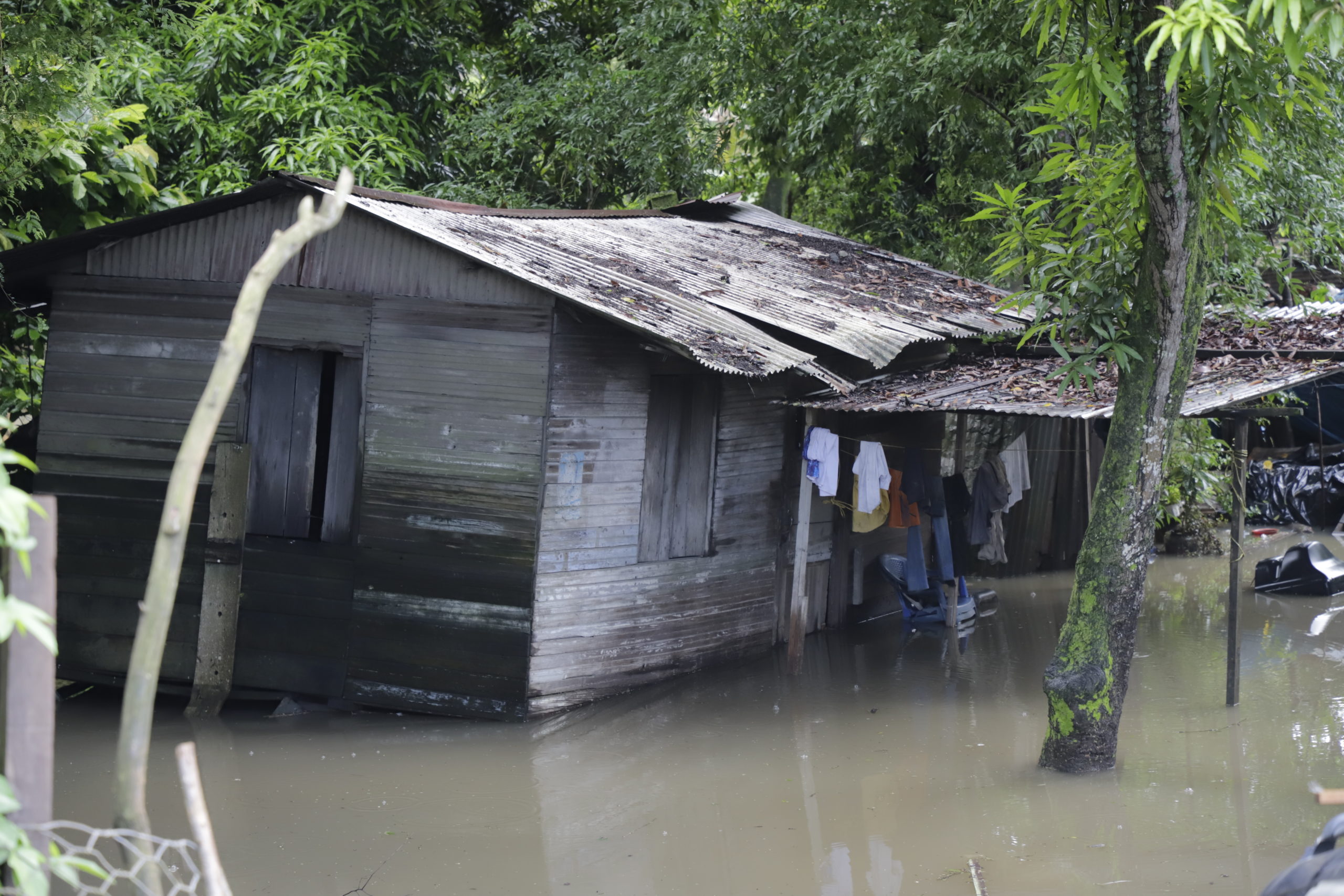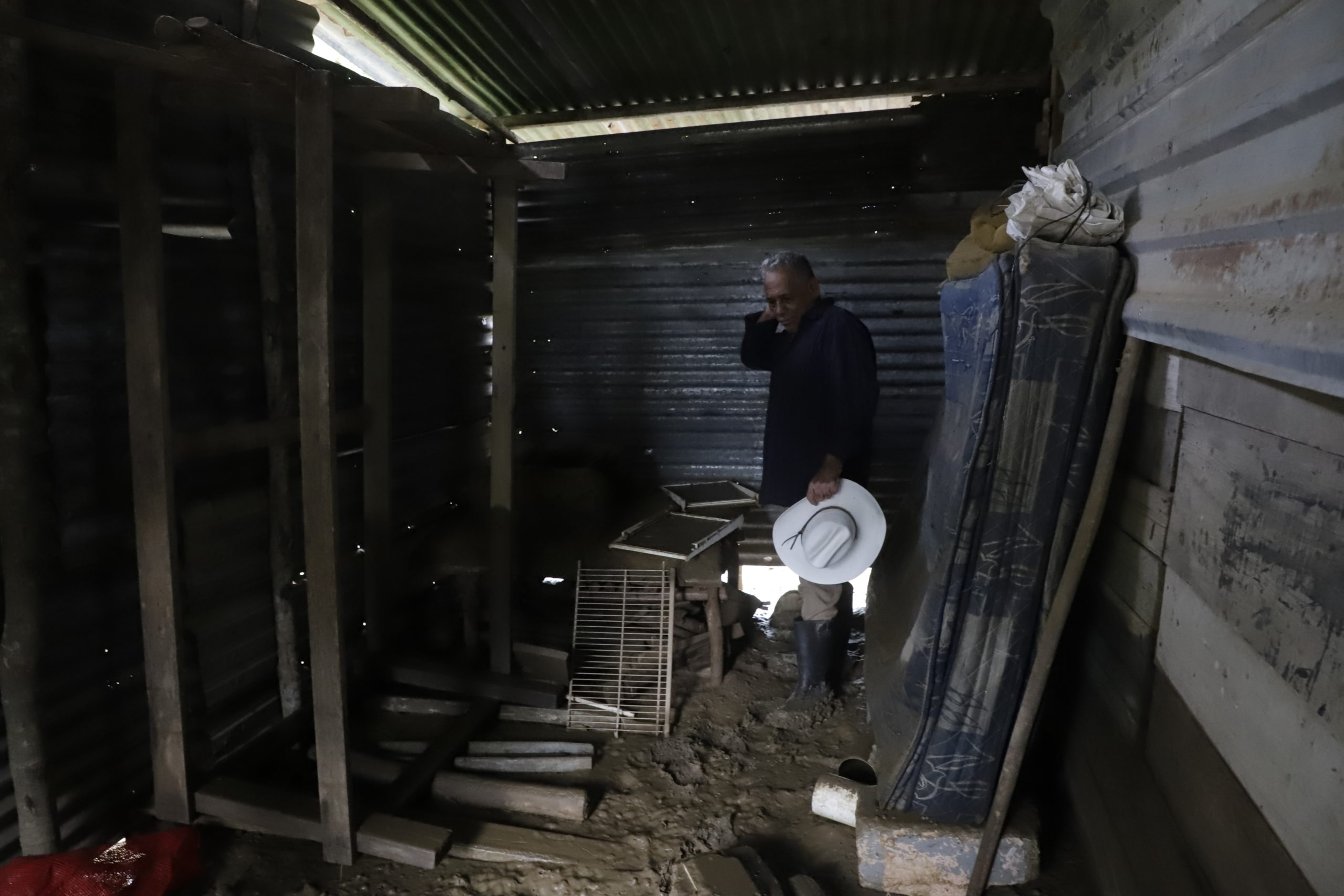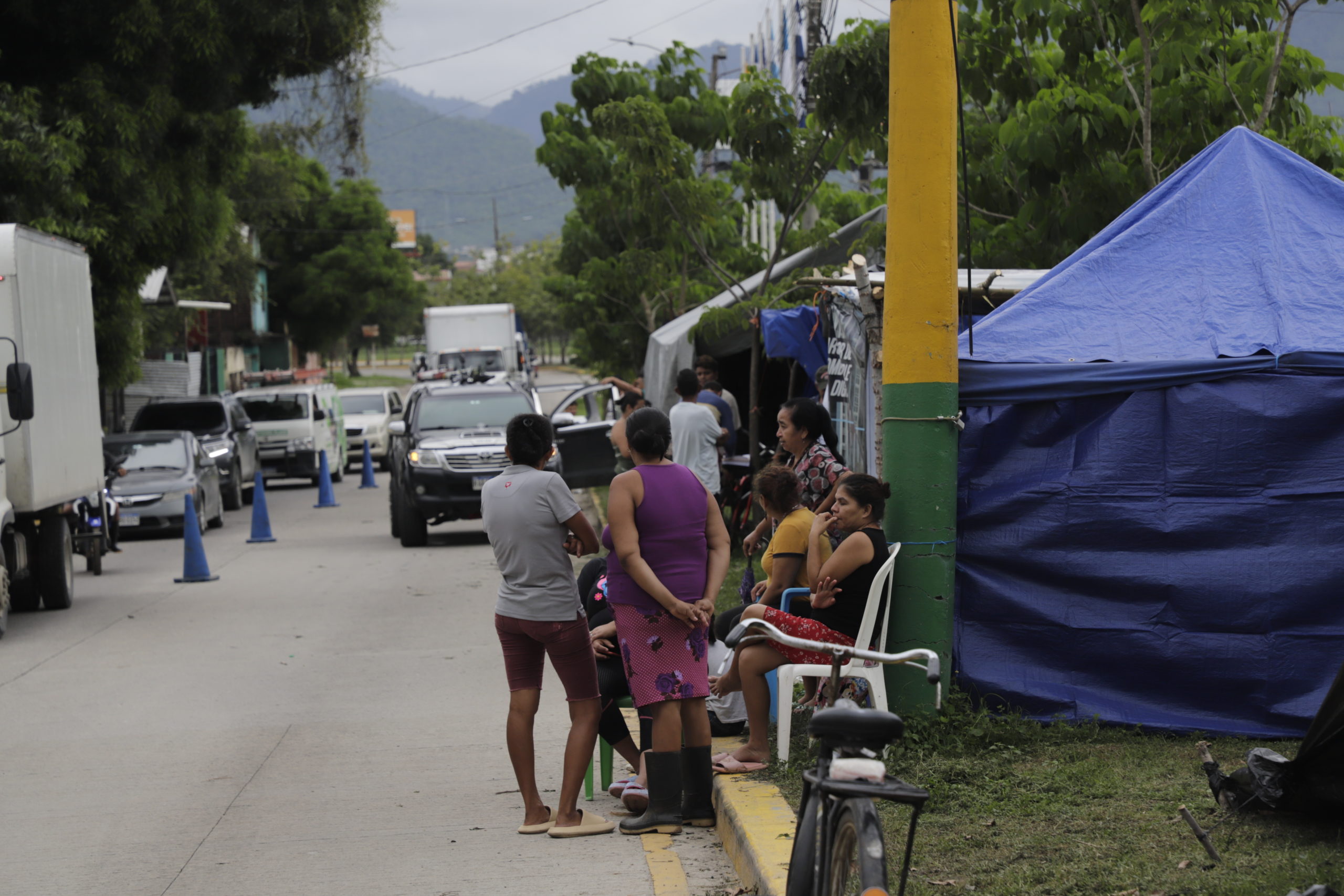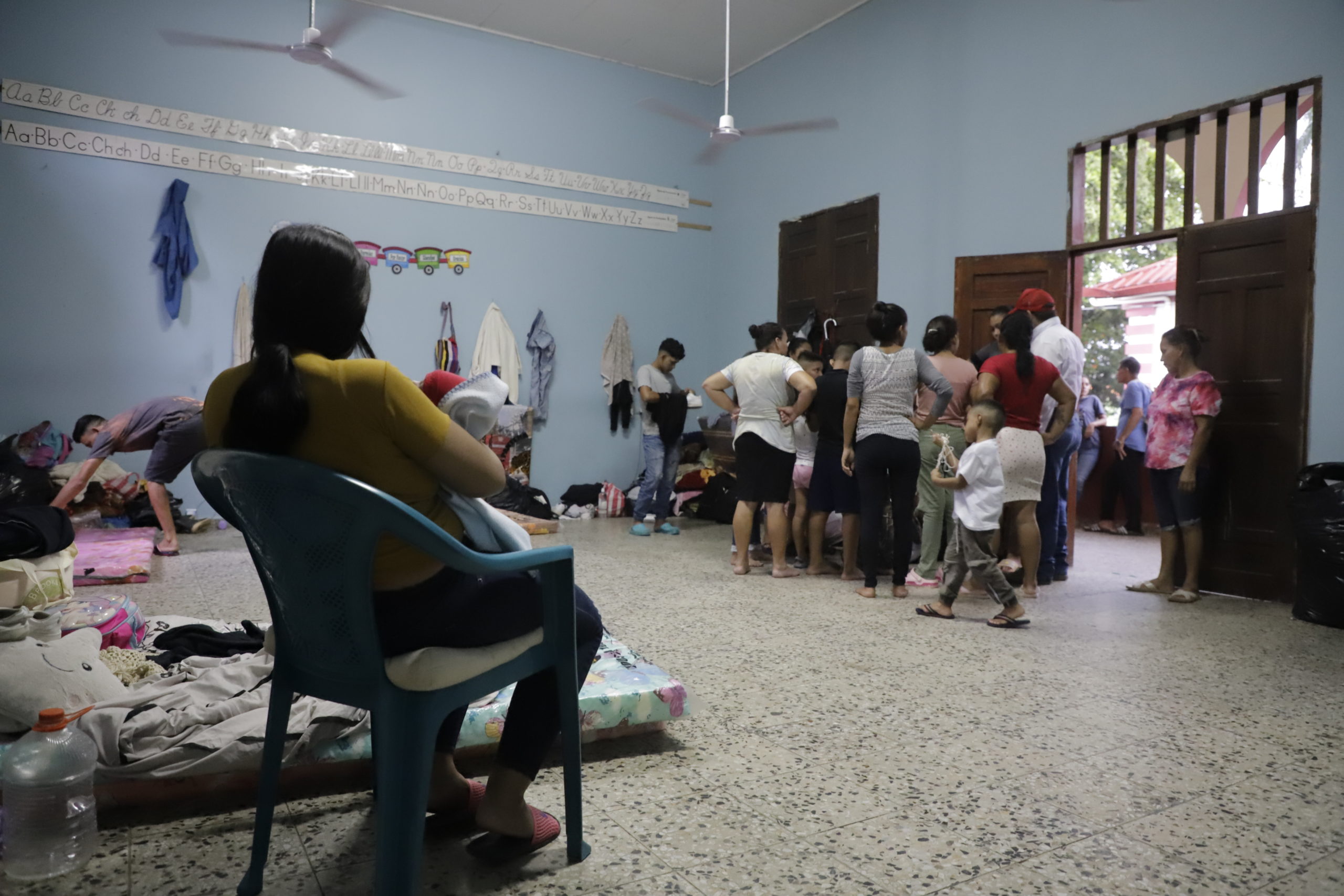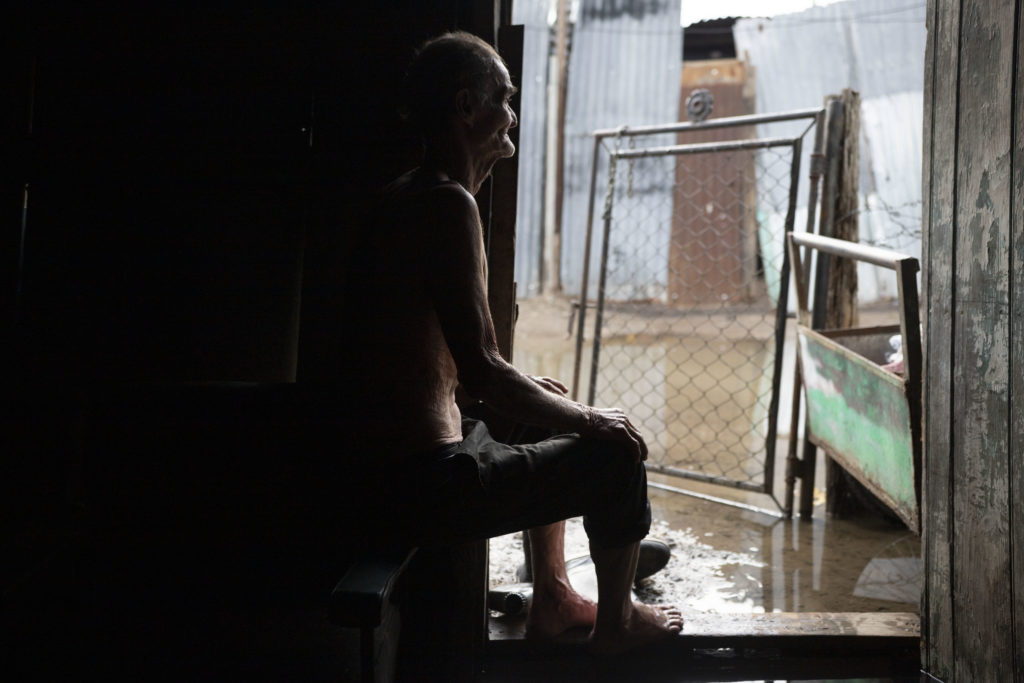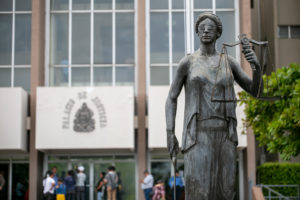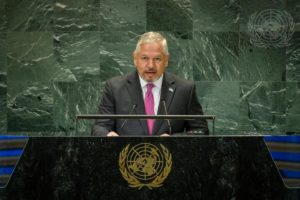Heavy rain showed that Valle de Sula, an alluvial valley located in northwestern Honduras, remains vulnerable, and thousands of families who live on the banks of the Chamelecón and Ulúa rivers have been abandoned. In El Progreso, Yoro, inhabitants of the Zelaya Castro neighborhood vainly waited for a visit from President Xiomara Castro, which was later canceled. After waiting for several hours, their hope of receiving help from the government turned to frustration and dissatisfaction.
Text and photography: Fernando Destephen y Amílcar Izaguirre
Translation: José Rivera
English edit: Amy Patricia Morales
Jair Castro, a 37-year-old security guard, was at work in San Pedro Sula, in the department of Córtes, when he found out that his neighborhood in El Progreso, in the department of Yoro, was flooded. Jair rushed to his house in the Zelaya Castro neighborhood—located next to the CA-13 highway, which leads to Santa Rita—where legal processes are underway to determine who the rightful owners are. He went home to safeguard his belongings and look for a shelter that would take him, his wife and four sons.
On Wednesday, November 8, President Castro promised to visit the Castro Zelaya neighborhood, and, in the midst of such a disaster, this brought hope to hundreds of families who were affected by the floods and the lack of proper drainage. In the morning, they went to the side of CA-13, which connects El Progreso and Santa Rita Yoro, where they waited in line for the president.
“People say that the president is on her way and she has a solution for us,” Jair said while he joined the queue and held one of his sons in his arms. That Wednesday, inhabitants organized in several queues hoping to receive help. They made a list of people who were affected by the flood, but neither the president nor any help arrived.
The president’s visit was scheduled for 12:30 p.m., but was canceled because of bad weather. “It’s impossible to land in that area,” Ivis Alvarado, press secretary, said. He was on site with a large team from the government press who would provide news coverage of the visit.
Octavio Pineda, head of the Honduran Social Investment Fund (Fondo Hondureño de Inversión Social – FHIS), promised—after finding out that the president could not make it—a bridge will be built to avoid water stagnation. Furthermore, he said that a census will be conducted to resettle, rebuild and modify houses in the Castro Zelaya neighborhood. However, he did not address the legality of constructions in that neighborhood, a problem to which inhabitants are demanding a solution.
After the announcement that the president will not arrive was made, public officials and the government press left the area, and workers stopped using tractors to clean roads that lead to the neighborhood. For locals, the expectation of getting help faded and turned to dissatisfaction. Locals said that the only contribution the delegation made was to stir the mud and spread the bad smell.
From the official announcements, only Pineda’s promise was left. No supplies, including hygiene kits, were delivered as is customary when natural disasters take place. Communities only received second-hand clothes from a municipality employee. “This is by the people and for the people,” he yelled as people waited in line to randomly grab a piece of clothing, irrespective of the size.
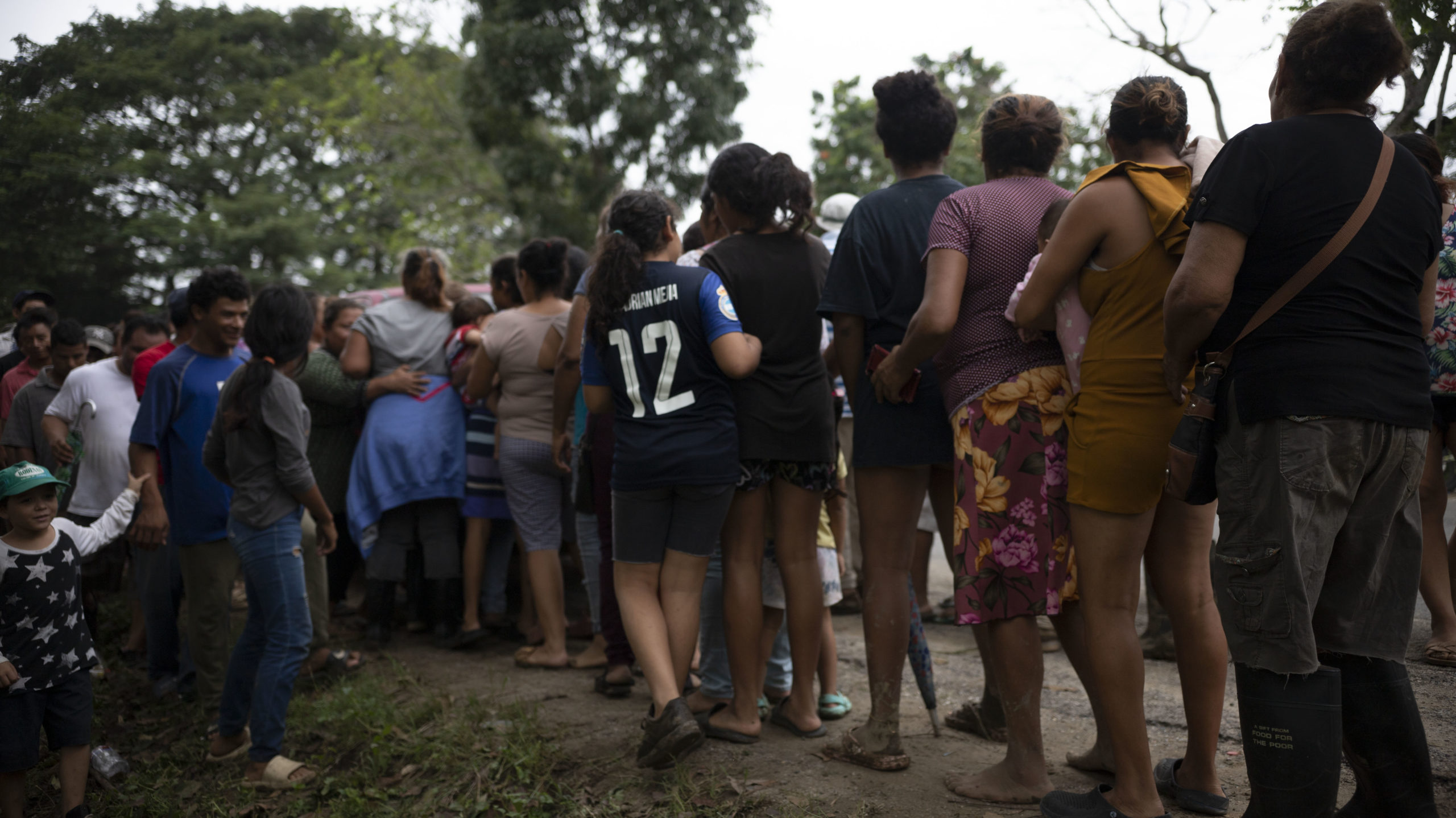
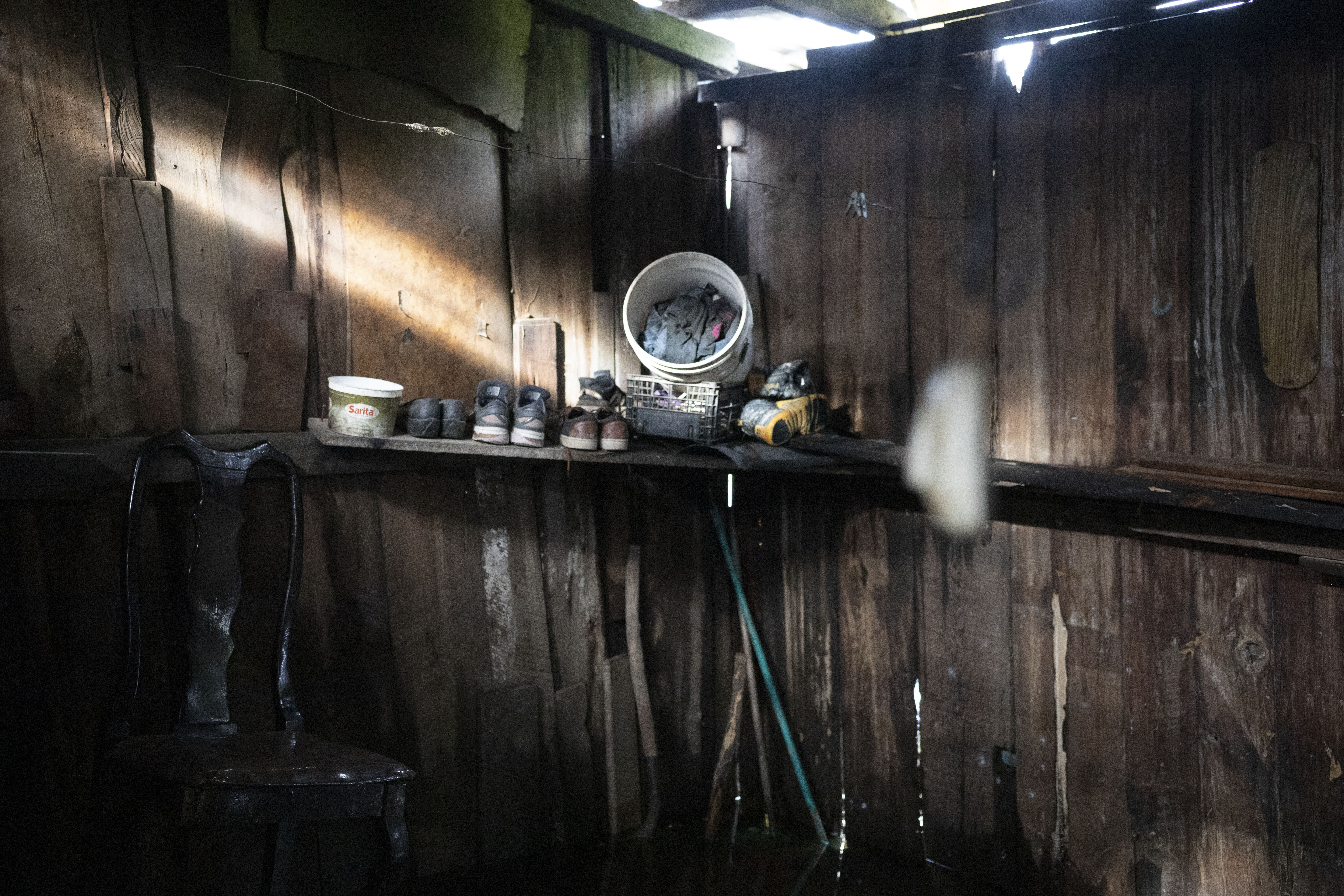
Elsewhere in El Progreso, east of La Democracia bridge, the Policarpo Paz neighborhood is located. Due to the accumulation of water from rivers Pelo and Ulúa, the area turns into a kind of pool whenever it rains. Locals try to get the water out by using pumps, but to no avail because there’s too much of it. “The mayor doesn’t help, and we all contribute by paying 100 lempiras ($4) to buy fuel for the water pumps, which we borrow,” a local from Policarpo Paz said.
The communities affected by the floods in El Progreso are: Las Chombas, La Fragua, Naranjo Chino, Veracruz, San Isidro, El Socorro, Palermo, Fican 1, Fican 4, Fican 8, and Policarpo Paz. According to the Municipal Emergency Committee (Comité de Emergencia Municipal – Codem), 16 shelters were made available in several areas, where 1,500 people stayed. Most of them returned to their homes when the rain ceased.
Don Adolfo Trejo, a 78-year-old Honduran, preferred to stay at his home, which is made of wood and is barely holding its structural integrity, rather than go to a shelter. From the doorstep, water could be seen building up inside his house and moistening his bed. There’s a wheelbarrow full of plastic bottles outside, which he sells to make a living.
Maricarmen and her three sons, on the other hand, had to sleep in a tent in the median strip of a boulevard close to La Democracia bridge. She’s 26 years old and has been through this experience many times.
The Permanent Contingency Commission (Comisión Permanente de Contingencias – Copeco) issued a red alert for the departments of Cortés, Santa Barbara, Islas de la Bahía, Copán and Yoro for a few days in the second week of November.
According to a report by Copeco, the following data was registered during the cold front: At least three people died, a total of 7,719 families were affected, including 193 directly affected by the floods and 564 voluntary evacuations. A total of 996 houses were damaged and 18 were destroyed, and 142 communities were isolated.
Despite investments by the Secretariat of Infrastructure and Transportation (Secretaría de Infraestructura y Transporte – SIT), Valle de Sula remains vulnerable to natural disasters. Ailyn Suárez, regional chief of SIT, said in La Lima last month that SIT had invested more than 350 million lempiras on infrastructure between November 2022 and September 2023 to mitigate floods. However, Jairo Castro, Irma Castro, Maricarmen, Adolfo Trejo and thousands more suffer the effects of floods and dream of a permanent solution.
